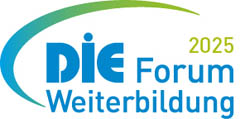Reforming International Cooperation in Education
 Helsinki (SF), November 2007 - The Master's degree eLearning programme Virt@ for teachers of visual arts has generated a number of interesting projects based on blended learning and international cooperation in education. Prof. Martti Raevaara, University of Art and Design Helsinki and head of the MA programme shares his insights.
Helsinki (SF), November 2007 - The Master's degree eLearning programme Virt@ for teachers of visual arts has generated a number of interesting projects based on blended learning and international cooperation in education. Prof. Martti Raevaara, University of Art and Design Helsinki and head of the MA programme shares his insights.
Virt@ is a Master's degree eLearning programme for teachers of visual arts based on the use of the net. Could you give us some details about this programme and its particularities?
Prof. Martti Raevaara: The first project-based programme was implemented during the period 2001-2004, and now we are already starting the third one, to be carried out in the years 2007-2010. The Virt@ is funded by the Ministry of Education in Finland.
The studies are based on the students' former artist or teacher education and art teaching experience. Most of the students are working in fine arts, but there are also designers, art and craft artists, architects, media artists, and photographers. The students live in various areas of Finland and will complete the degree of Master of Arts in three years. About 150 students have alreadyparticipated the programme.
The aims of the Virt@ are to explore, develop, and promote innovative practises and methods for eLearning and e-pedagogy in art and design education. These aims focus on interlinking studio and contact teaching with working process in the net and with the higher education process of building a professional identity when using the net in art and design.
During the study year, we have only five to six weeks of contact lessons or workshops around Finland, and the rest of the education is organised using the net. Once a year, students will come to the University of Art and Design in Helsinki for a week, and then we put significant emphasis on social activities, too.
What role does net-based learning play in developing new models for learning and working at educational institutions?
Prof. Martti Raevaara: The use of the net is allowing the expansion of tools and methods to reshape educational setting, but the pedagogical questions of learning, such as how to support creativity, artistic processes, or visual knowledge building, still exist.
It is obvious that the implementation of the net in education is more complex and slower than expected. The point is not a high capacity of computers or proper software. The biggest challenge is to change teaching and learning routines and to rethink pedagogical courses of action. It is also obvious that the pedagogical use of the net does not fit well into the existing teaching and learning culture and education system.
You have to encourage teachers to try out and explore the use of the net in their courses. The potential of this process is to open a new "neutral space", where it is easier to rethink and revalue separate courses and curricula. The "neutral space" is created by using the net as a tool to take a distance from and add a new perspective to the existing conventions and tradition, and from/to teachers' personal "course darlings" too.
At its best, the shared planning and production of eLearning modules or courses may be an effective tool to reform the working culture and leadership of an educational institution, from individual work to inspiring knowledge sharing and building. It will also open new, creative ways of cooperation and collaborative modes of action in teaching and research, also in the international context.
You may also ask if there is something teachers can learn from their students. Students are often more experienced in using any communication tool or method if they are motivated to do it. Good examples of that are how young people use text messages, chat, Skype, Second Life, or mobile-phone cameras for communication and knowledge sharing. This "informal student resource" of technological skills and experimental approach is evidently a great potential source when exploring and transferring innovative practices for eLearning.
What lessons have you learned concerning international cooperation in education?
Prof. Martti Raevaara: The Virt@ and international eLearning projects have made evident the importance and prospect of international cooperation in the field of eLearning in art and design education. There is a growing need for visually oriented pedagogical experts such as teachers, tutors, designers, and developers who are capable of collaborative knowledge building and cooperation with other experts from different fields from both the private and public sectors in an international context.
Communication and working across the borders between schools, countries, and languages, however, is as demanding as before. The ideology of digital technology celebrates immateriality, immediacy, and immersive images, but these aims have to be encountered through media, old and new, over both geographical and cultural distances. International course production means a lot of effort in preparing and generating intensive working process.
We need time to get know teachers, students, programmes, shared working, and teaching methods, etc., and discussions about core concepts, assessment criteria, credit systems of participant schools are needed, too. For example, timetables of the academic year of partner sites, working culture, and the personal timetables of individual teachers can cause surprising obstacles to synchronizing online lessons for international courses.
In another project, we learned that the alternative way of building bridges between different programmes might also have to overcome the restrictions of identical learning outcomes. Another option is to open cross-disciplinary collaboration initially via thematic and conceptual collaboration.
In spite of many practical issues and problems to be dealt with, international cooperation in education that is based on the net opens inspiring possibilities and visions to develop and deepen learning, teaching, and research work in a way that focuses on new creative methods of cooperation and collaborative modes of action.








